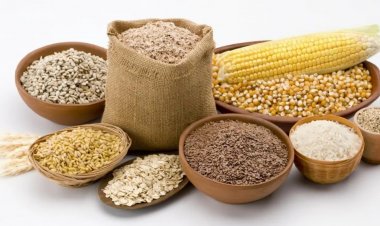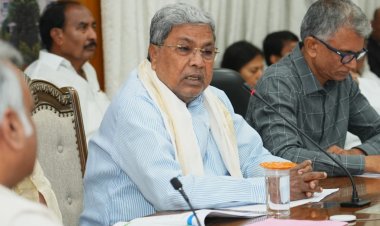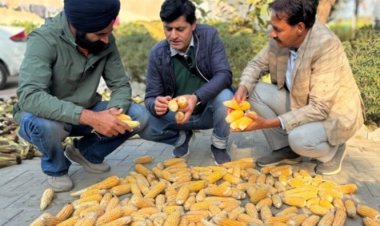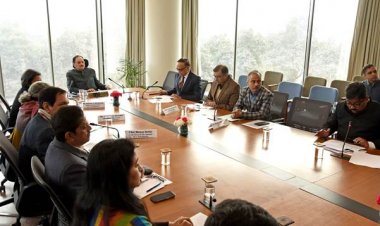Agriculture food system causes 31% emissions, it is necessary to reduce it for net zero target: World Bank report
The agri-food system has not yet been targeted for limiting greenhouse gas emissions, whereas doing so is essential for achieving net zero emissions and limiting global warming. Globally, the agri-food system is responsible for 31 percent of emissions. The agri-food system contributes 34.1 percent of total emissions in India, 84.9 percent in Brazil, 17 percent in China, 55.1 percent in Bangladesh and 21.4 percent in Russia.

The agri-food system has not yet been targeted for limiting greenhouse gas emissions, whereas doing so is essential for achieving net zero emissions and limiting global warming. Globally, the agri-food system is responsible for 31 percent of emissions. The agri-food system contributes 34.1 percent of total emissions in India, 84.9 percent in Brazil, 17 percent in China, 55.1 percent in Bangladesh and 21.4 percent in Russia.
Due to its large population, India's agri-food system is one of the highest greenhouse gas emitters in the world. India is the third largest emitter of greenhouse gases from the agri-food system, after China and Brazil. After that comes the United States of America and Indonesia.
This has been said in the World Bank's 'Recipe for a Livable Planet: Achieving Net Zero Emissions in the Agri Food System' report. It also identifies ways to achieve net zero emissions at the lowest cost, while maintaining global food security and ensuring just transitions for vulnerable groups. It says that by focusing on the largest sources of emissions and the lowest-cost options, countries will be able to prevent greenhouse gases from the agri-food system from reaching the atmosphere.
The report said that till now most of the efforts to reduce emissions have been focused on sectors like energy, transportation and manufacturing, where the use of some key technologies has also been successful in reducing emissions. But emissions levels are still far from where they need to be to prevent climate disaster. The world has long avoided confronting agri-food system emissions because of its complexity. But according to scientists, it is time to put agriculture and food at the top of the emissions reduction agenda, otherwise the world will become unlivable for future generations.
This report is timely for many reasons. There is more information available today about the global agri-food system and its growing climate impact than there was just a few years ago. It is also clear that limiting global temperature rise to 1.5 degrees Celsius by 2050 will require net zero emissions from the agri-food system. Despite its urgent need, agricultural negotiations under the United Nations Framework Convention on Climate Change (UNFCCC) are stalled because of differences between developed and developing countries on the issue of reducing emissions.

More emissions from the global agri-food system than electricity production
Emissions from the agri-food system are much higher than before. Previous calculations estimated that about one-fifth of global emissions come from agriculture, forestry and other land use (AFOLU). But recent studies incorporating emissions before and after production show that the global agri-food system is responsible for 31 percent of emissions. This produces an average of 16 billion metric tons of carbon dioxide equivalent per year. By comparison, this is 2.24 billion tonnes or 14 percent more than the emissions from electricity production in the world. Yet little attention has been paid to reducing emissions from the global agri-food system. For example, only half of the countries in the Paris Agreement included agriculture-related targets in their national targets (Nationally Determined Contributions – NDCs).
The largest number of emissions in the agri-food system come from these eight key sectors – 1) livestock-related emissions, 25.9 percent; 2) deforestation or change in use, 18.4 percent; (3) food system waste, 7.9 percent; (4) household consumption of food items, 7.3 percent; (5) fertilizer production and use, 6.9 percent; (6) soil-related emissions, 5.7 percent; (7) farm energy use and supply, 5.4 percent and (8) emissions from rice production, 4.3 percent.
According to the report, 80 percent of the world's fertilizers are consumed in middle-income countries. The top five countries include Brazil, China, India and Indonesia. In middle-income countries, an average of 168 kg of fertilizers are used per hectare. In high income countries it is 141 kg and in low income countries it is only 12 kg per hectare. Middle income countries are also the largest fertilizer producers. China, India and Russia produce more than one-third of the world's nitrogen fertilizer. Fertilizers contribute 6.4 percent of emissions from the agri-food system. These are the largest sources of emissions in the pre-production stage.
Middle income countries contribute 68 percent to agricultural food emissions.
Middle-income countries currently and historically produce the most agricultural food emissions, high-income countries have the highest per capita emissions, and low-income countries have the highest rates of emissions growth. Today, middle-income countries account for 68 percent of global agri-food emissions, while high-income countries account for 21 percent and low-income countries account for 11 percent. There are 108 middle income countries in the world. The number of high income countries is 77 and the number of low income countries is 28.
Higher per capita emissions in high-income countries are primarily caused by heavy consumption of meat and dairy, food transportation, processing, packaging, and wastage of foods. Due to low population growth rate, the share of these countries in agricultural food emissions has declined. These countries have shifted from agriculture to manufacturing and services and they source food from middle- and low-income countries. They have invested in food productivity and renewable energy.
Low-income countries have the lowest greenhouse gas emissions from the agri-food system, but the growth rates there have been the highest since the early 1990s. Emissions from these countries have increased by 53 percent compared to 12.3 percent for middle-income countries and 3 percent for high-income countries.
A deeper look reveals that the bulk of agricultural food emissions are concentrated in a handful of countries, mostly middle-income. This trend is likely to continue as these countries follow the same path of growth that high-income countries followed in the past. The only difference is that the population of these middle-income countries is much larger and growing.
Fear of global warming reaching 3.2 degrees
It was agreed in the Paris Agreement to limit global warming to 1.5 degrees Celsius compared to pre-industrial levels. If the temperature rises beyond this, the countries presently at risk will be at greater risk. If the temperature rises by more than two degrees, the food crisis will become acute and the number of destructive cyclones will increase. To achieve the 1.5 degree target, it is necessary to reduce 52 giga tonnes of emissions every year to zero by 2050. But, as there is progress in actions decided in 2020, it is estimated that by the year 2100, global warming will reach 3.2 degrees Celsius.
Of the 52 giga tonnes of emissions annually, 16 tonnes come from the agri-food system. New research shows that even if all fossil fuel emissions in other sectors were eliminated, emissions from the agri-food system alone would be enough to push global warming beyond the 1.5°C limit. It may even increase the temperature by 2.0 degrees Celsius. According to the Paris Agreement, to meet the 1.5°C target, emissions from the agri-food system will have to be reduced to zero by 2050.
Lack of finance for mitigation
According to the report, there is a major shortage of financing for mitigation in the agri-food system. Although climate finance has almost doubled over the past decade, the amount available to the agri-food system is only 4.3 percent, or $28.5 billion, of the total financing for mitigation and adaptation.
Only $14.4 billion was made available for mitigation in 2019-20, which was 2.2 percent of the total climate finance. Most of the climate finance is for other sectors. Renewable energy receives 51 percent of the financing and low-carbon transportation receives 26 percent. The report estimates that annual investments need to increase 18-fold to $260 billion to halve current food system emissions by 2030.
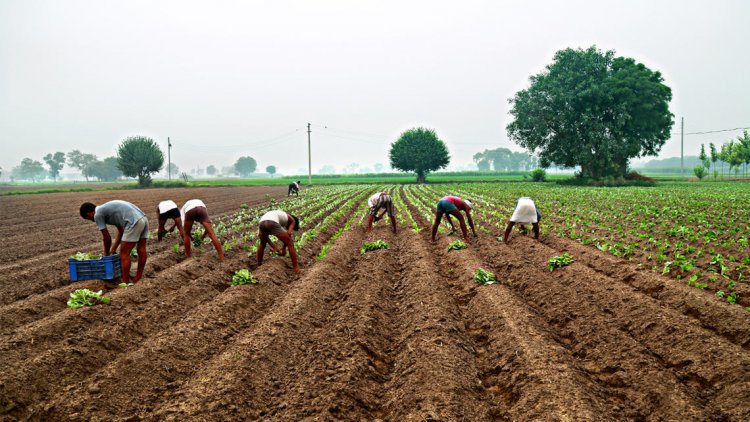
Changes in the agro-food system threaten food security
Caution is needed in adopting low-emission agri-food systems. Some studies have estimated that agricultural food system reform, if not done carefully, could reduce agricultural production and increase food prices. For example, reducing fertilizer use or switching to organic farming would reduce emissions by 15 percent, but could reduce agricultural production by 5 percent and increase world food prices by 13 percent. Healthy eating can be 10 percent more expensive. Other studies are even more disappointing. It has been estimated that by 2050, the food security of four crore people could be at risk due to deforestation. For these reasons, political opposition to the adoption of a net zero agri-food system is possible.
The global nature of the agri-food system also leads to volatility in food prices. For example, 122 million people have faced hunger since 2019 because of supply chain disruptions caused by COVID-19, extreme weather conditions and Russia's attack on Ukraine. Investing in low-emission agriculture and food and land use changes could yield $4.3 trillion in health, economic and environmental benefits by 2030.
Vegetarianism reduces emissions
Vegetarianism of the people of India also reduces emissions. There are more vegetarians in India than any other country in the world. India's population is almost four times that of the US, yet its emissions are only 30 percent more than the US. This is because per capita emissions are much lower than the global average. Apart from vegetarianism, another major reason for this is poverty and malnutrition. A large part of the population cannot consume more.
This creates a contradiction. While in most of the countries a change in diet would reduce emissions, in India such a change would lead to a small increase in emissions. In India, 60 percent of agri-food system emissions come from the farm gate. India's livestock sector is also very inefficient. The emissions intensity per unit of both milk and beef here is among the highest in the world. In contrast, India's rice production has the lowest emission intensity. But being the second largest rice producer after China, the total emissions here are higher. Not only is farm-gate emissions the highest in India, pre and post-production emissions are also increasing rapidly.
Tackling emissions from the agri-food system
According to the report, if one-fourth of the 88 lakh diesel pumps used for irrigation in India are replaced with solar powered pumps, 115 lakh tonnes of emissions can be reduced every year. Solar powered irrigation has been around since the 1970s and is being rapidly adopted in India. By December 2020, some 2.72 lakh solar powered irrigation systems had been commissioned in India.
In the agricultural sector, 48 percent of the mitigation potential in China and 63 percent in India lies in carbon sequestration. The potential for organic carbon sequestration in soils is greatest in middle-income countries. In India, along with Mexico, the method of precision nutrition management is being adopted to improve the use of nutrients in crops. Due to this, fertilizers are being used better without affecting food security.
Despite these steps, the progress in this direction is slow. According to the report, politics dominates the policies. Food security in India and Bangladesh is almost entirely dependent on rice. Here governments provide subsidies on water, fertilizers, pesticides and electricity for rice production. There has been strong opposition to the steps taken to end it and there is competition among political leaders to get the votes of farmers.



 Join the RuralVoice whatsapp group
Join the RuralVoice whatsapp group

















